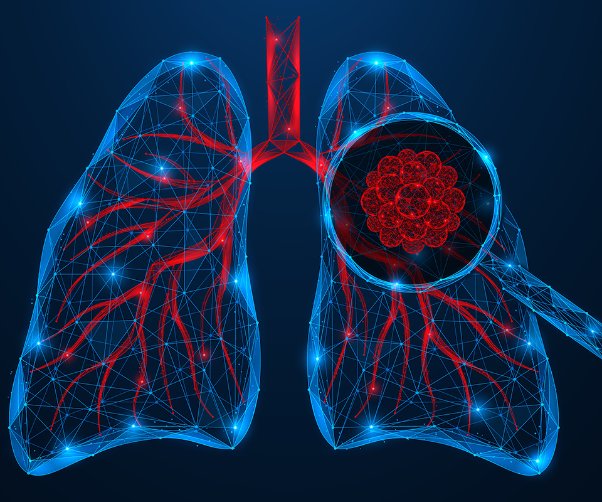
Lung Cancer: Know the Symptoms, Understand Your Risk, and Take Action
Lung cancer is the leading cause of cancer deaths worldwide, responsible for more fatalities than breast, colon, and prostate cancers combined. One of the main challenges with lung cancer is that it often goes undetected in its early stages. The disease typically develops without symptoms, until it has progressed and becomes more difficult to treat. As such, awareness and timely screening are essential to improving outcomes and survival rates.
Recognizing the symptoms
When symptoms appear, they can differ depending on the type and stage of cancer. Common signs include:
- Persistent cough
- Chest pain
- Hoarseness
- Shortness of breath
- Wheezing
- Coughing up blood
Types of lung cancer
Lung cancer generally falls into two primary categories:
- Non-small cell lung cancer (NSCLC) – The most common type, representing about 80% of cases.
- Small cell lung cancer (SCLC) – A less common but more aggressive type that tends to grow and spread to other parts of the body quickly.
Other cancers that may affect the chest area include:
- Lymphomas – Affecting the lymph nodes
- Sarcomas – In the bone or soft tissue
- Pleural mesothelioma – In the lining of the lungs
Lung cancer is the third most common cancer in the United States, with more than 226,000 new cases diagnosed each year. In 2022, more than 635,000 people in the U.S. were living with lung or bronchus cancer, and approximately one in 16 of people will receive a diagnosis in their lifetime.
SUBSCRIBE TO OUR BLOG
and you'll receive more health & wellness tips right in your inbox.
SUBSCRIBE NOWUnderstanding the risk factors
Smoking remains the leading cause of lung cancer, linked to about 80 to 90% of lung cancer deaths. It’s important to note that around 10 to 20% of people diagnosed with lung cancer have never smoked. Other contributors, including environmental and genetic factors include:
- Secondhand smoke exposure
- Radon and asbestos contact
- Diesel exhaust, coal products, and other industrial pollutants
- Previous chest radiation treatments
- Family history of lung cancer
The importance of screening
Early detection is one of the most effective tools in the fight against lung cancer. Screening is recommended for adults ages 50 to 80 who currently smoke or have quit within the last 15 years or and have a 20 pack-year history – the equivalent of one pack a day for 20 years.
To identify or rule out lung cancers, doctors will often perform a combination of tests, including blood tests, imaging such as x-rays and CT scans, and biopsies. These help detect abnormalities before symptoms appear, when treatment options are most effective.
Survival rates for lung cancer depend on the stage at diagnosis and how well it responds to treatment. Detecting lung cancer early greatly increases the likelihood of successful outcomes.
Taking steps toward prevention and health
While not all cases can be prevented, certain lifestyle choices can significantly lower risk. Avoiding tobacco use, limiting exposure to harmful substances, maintaining a balanced diet, and engaging in regular physical activity all contribute to stronger lungs and overall wellness.
For those with a history of smoking or other risk factors, it’s important to discuss screening options with a healthcare provider.
Related Articles


